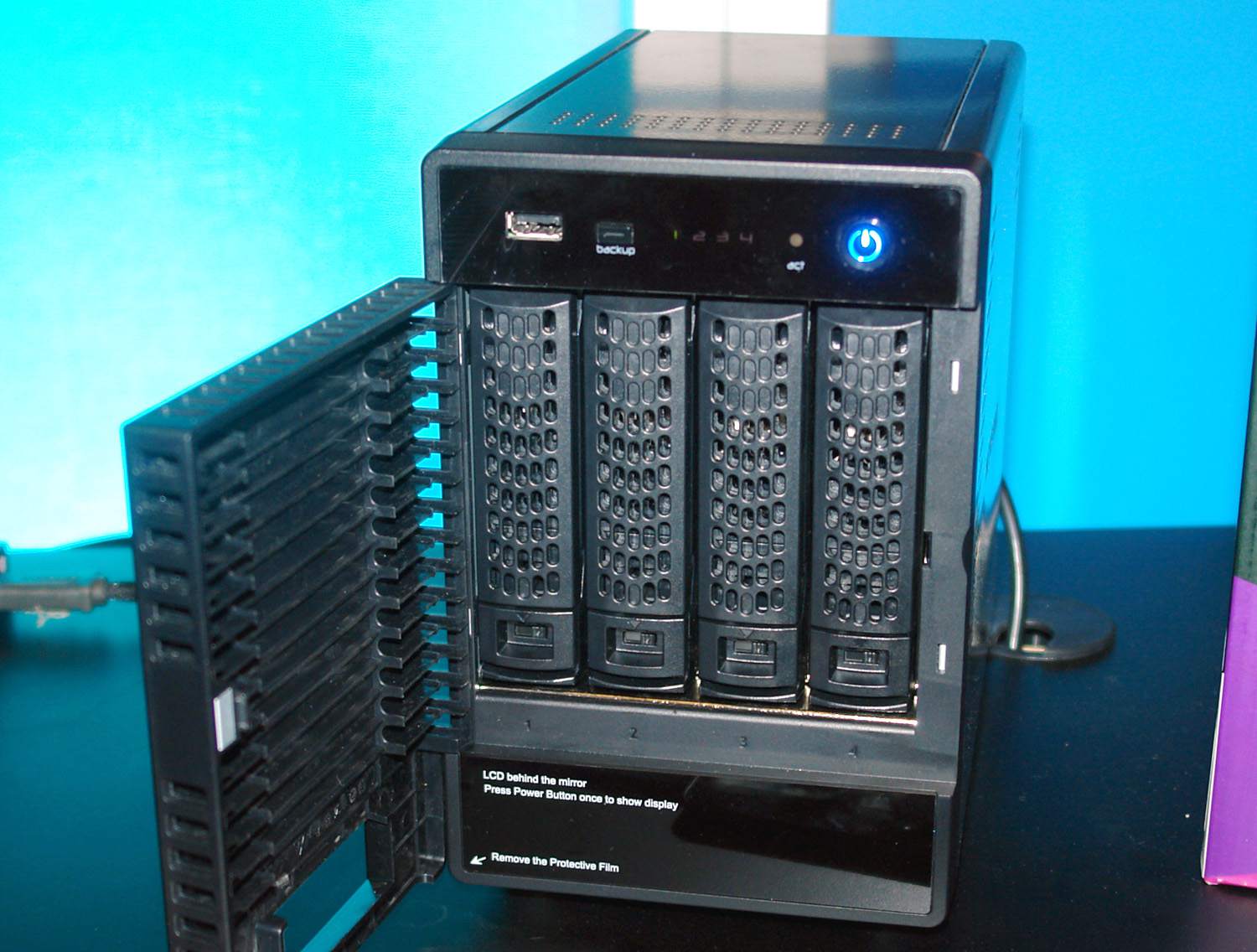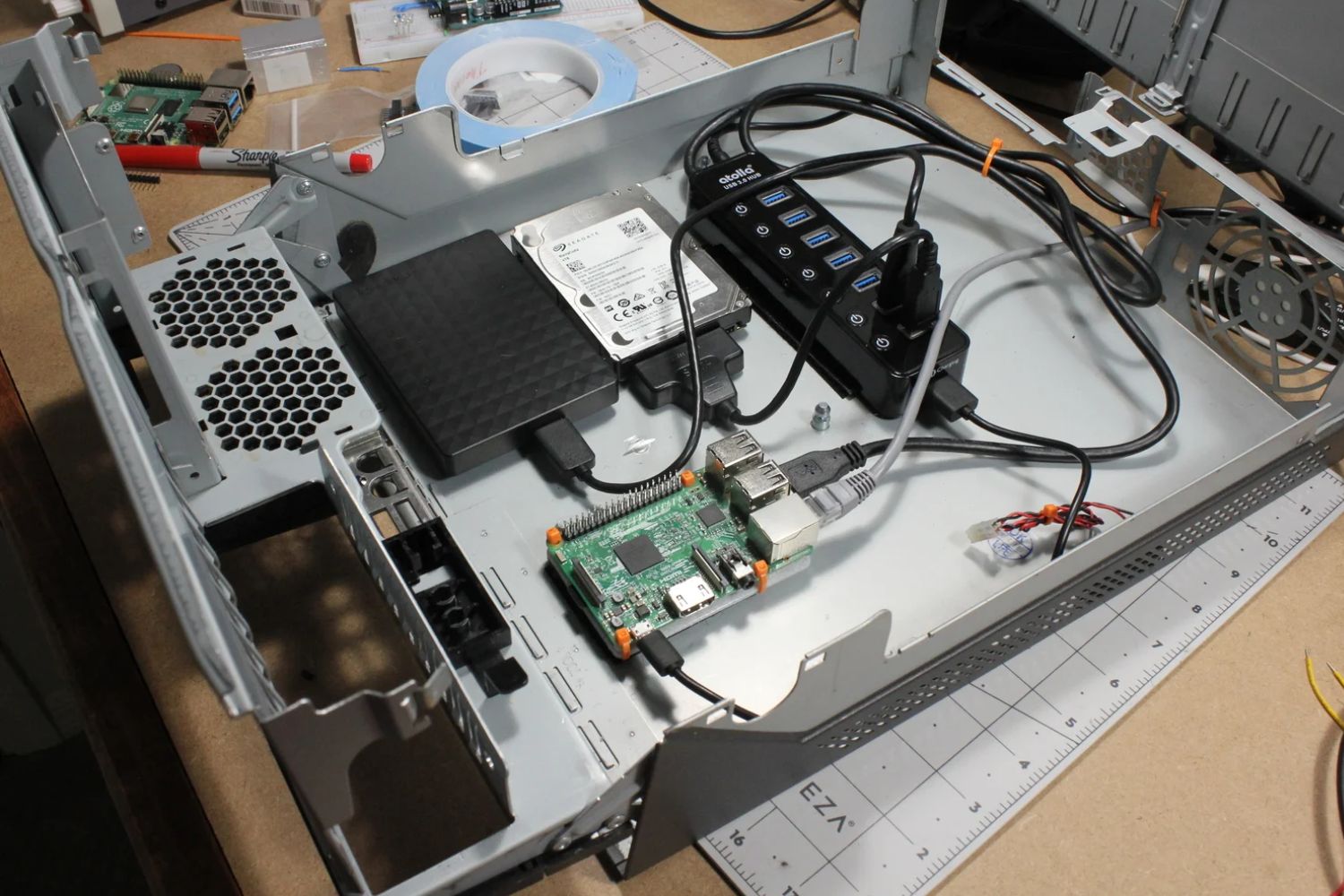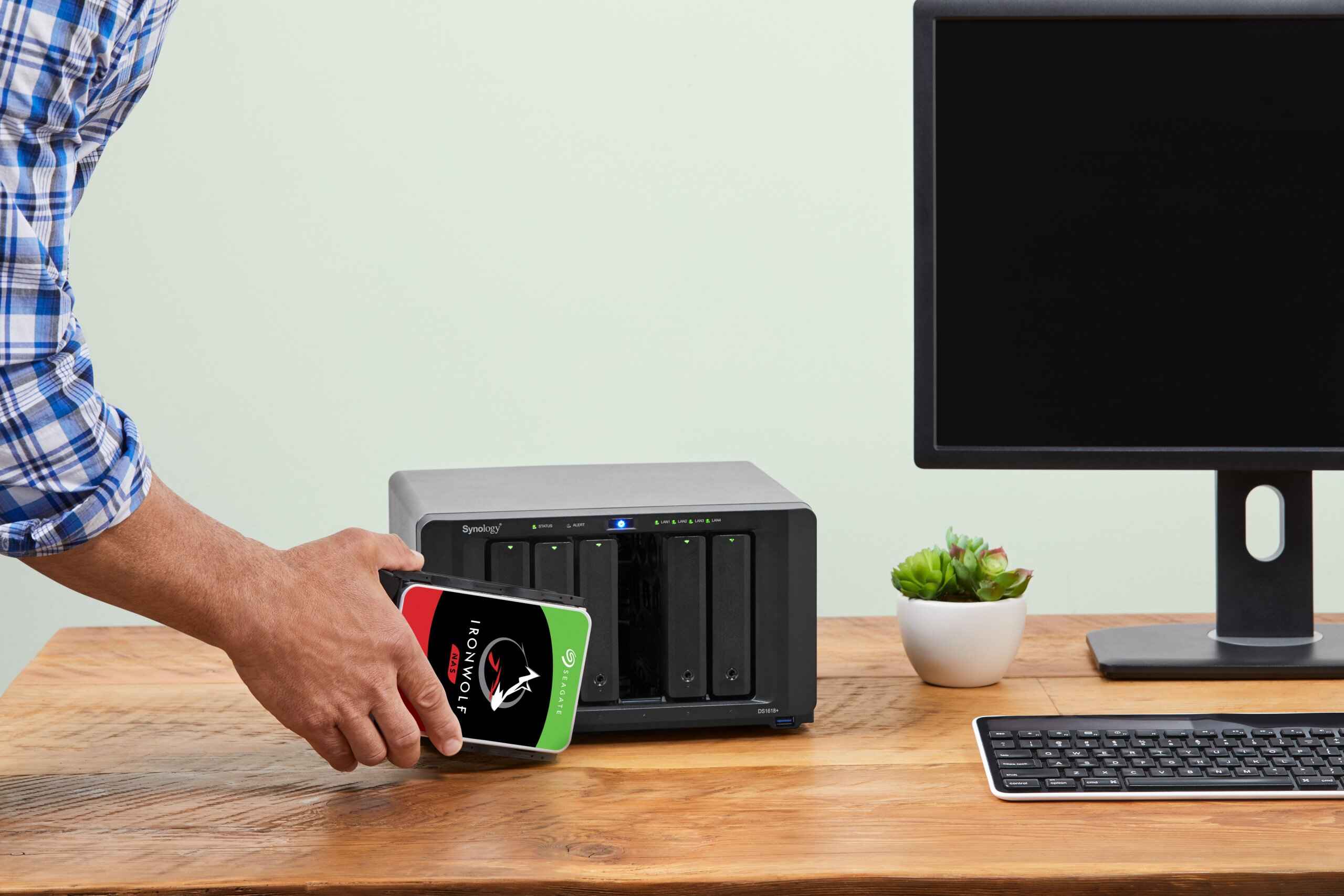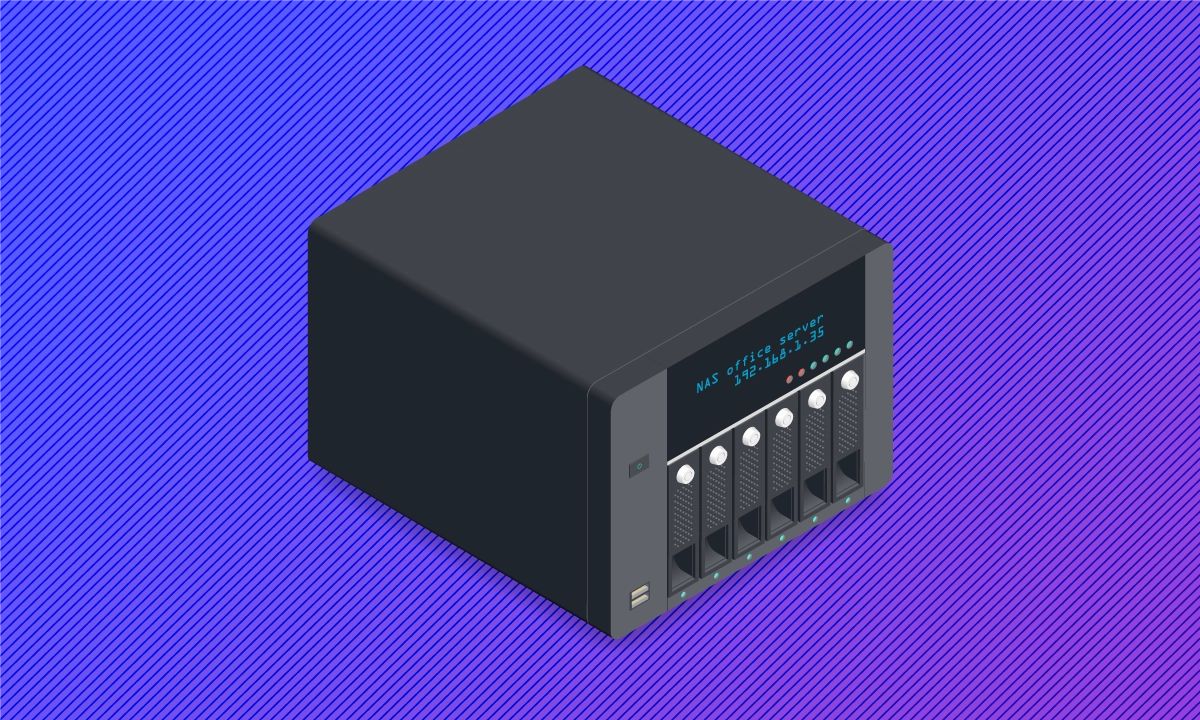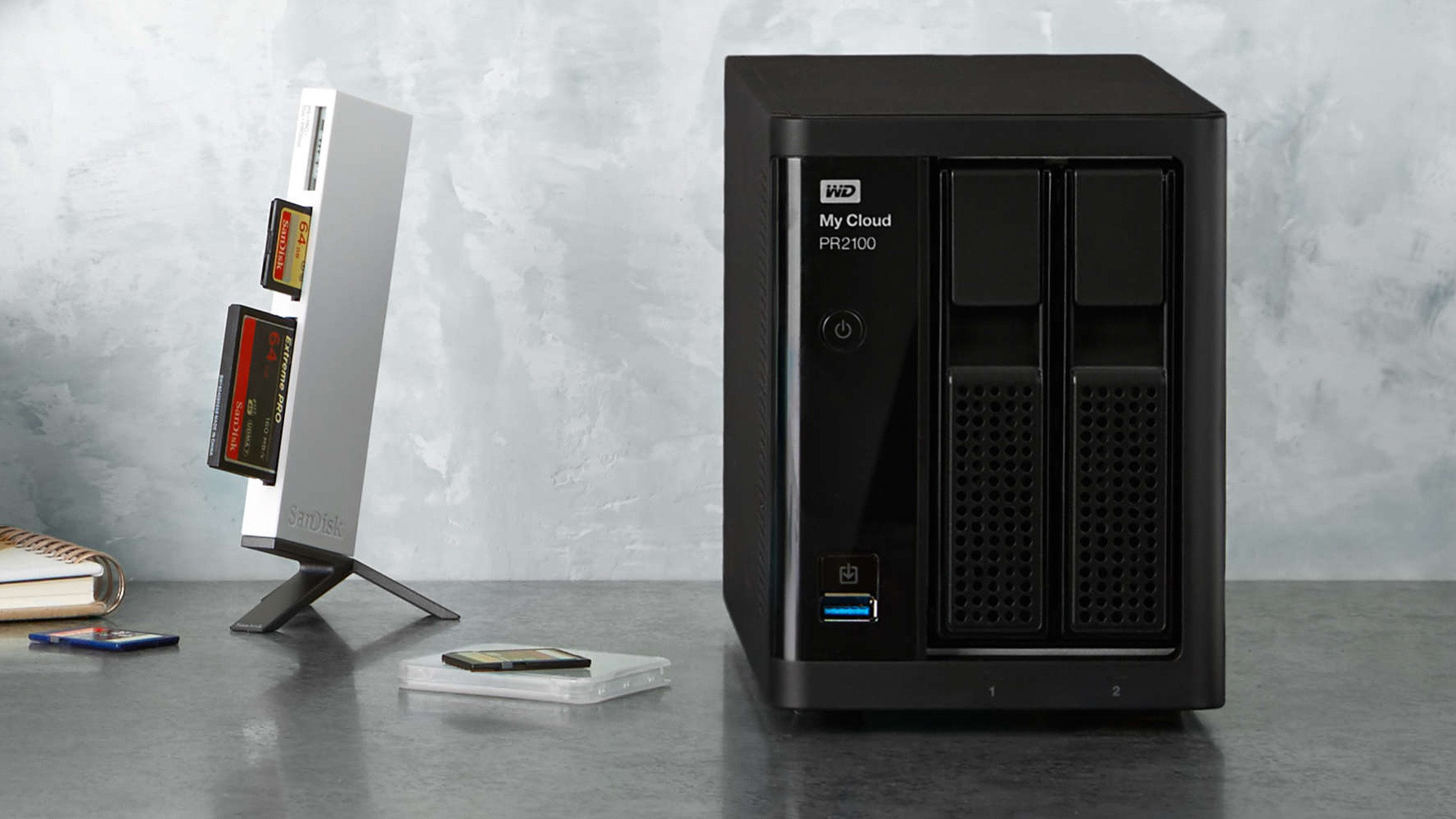Introduction
Data Storage and Backup
Network-attached storage (NAS) is a powerful and versatile technology that has revolutionized the way individuals and businesses store, access, and manage their data. NAS devices are essentially specialized file servers that connect to a network, providing centralized storage accessible to various users and client devices. These devices have gained immense popularity due to their flexibility, scalability, and cost-effectiveness. Whether it's for personal use or business applications, NAS serves a myriad of purposes, making it an invaluable asset in today's digital landscape.
From data storage and backup to media streaming and remote access, NAS offers a range of functionalities that cater to diverse needs. Understanding the various use cases of NAS can help individuals and organizations harness its full potential, leading to enhanced productivity, data security, and collaboration.
In this article, we will delve into the multifaceted uses of network-attached storage, exploring how it facilitates data storage and backup, file sharing and collaboration, media streaming, remote access and file synchronization, surveillance and security, as well as virtualization and cloud integration. By shedding light on these applications, we aim to provide a comprehensive understanding of the significance of NAS in modern computing environments.
Let’s embark on a journey to uncover the myriad purposes and benefits of network-attached storage, shedding light on its pivotal role in meeting the evolving demands of data management and accessibility.
Data Storage and Backup
One of the primary functions of network-attached storage (NAS) is to serve as a reliable and efficient data storage and backup solution. By leveraging NAS devices, individuals and organizations can consolidate their data in a centralized location, ensuring easy accessibility and seamless data management. Whether it’s important documents, multimedia files, or critical business data, NAS provides a secure repository for storing diverse types of information.
Moreover, NAS devices are equipped with robust backup features, allowing users to implement automated backup schedules, versioning, and data mirroring. This capability is instrumental in safeguarding against data loss due to hardware failures, human error, or malicious activities. With NAS, users can create redundant copies of their data, establishing a safety net that mitigates the risks associated with data corruption or accidental deletion.
Furthermore, the scalability of NAS enables users to expand their storage capacity as their data requirements grow. This flexibility is particularly beneficial for businesses experiencing rapid data accumulation, as it eliminates the need for frequent hardware upgrades and simplifies the process of accommodating escalating storage demands.
Overall, NAS serves as a resilient and adaptable solution for data storage and backup, offering a seamless way to organize, protect, and manage data assets. Its ability to centralize storage resources and provide robust backup functionalities makes it an indispensable tool for individuals and businesses striving to fortify their data management practices.
File Sharing and Collaboration
Network-attached storage (NAS) plays a pivotal role in facilitating seamless file sharing and collaboration among individuals and teams. By leveraging NAS devices, users can establish a unified platform for sharing documents, multimedia files, and other resources, fostering efficient collaboration and information exchange.
NAS devices are equipped with advanced access control and permission management features, enabling users to define granular access rights for shared folders and files. This functionality empowers organizations to enforce security protocols and restrict unauthorized access, thereby safeguarding sensitive data while promoting collaborative workflows.
Furthermore, NAS supports the implementation of synchronization and versioning mechanisms, ensuring that all collaborators have access to the latest iterations of shared files. This real-time synchronization capability minimizes the risk of version conflicts and discrepancies, enhancing the overall efficiency of collaborative endeavors.
Moreover, NAS devices often integrate seamlessly with productivity and collaboration tools, allowing users to leverage popular applications for document editing, project management, and communication. This integration fosters a cohesive and streamlined collaborative environment, where team members can seamlessly access, edit, and share files directly from the NAS platform.
Overall, NAS serves as a robust foundation for fostering collaborative work environments, empowering individuals and organizations to share, collaborate, and innovate effectively. Its ability to centralize file sharing, enforce access controls, and integrate with productivity tools makes it an indispensable asset for enhancing teamwork and productivity.
Media Streaming
Network-attached storage (NAS) serves as a versatile platform for seamless media streaming, catering to the entertainment and multimedia needs of individuals and households. With the proliferation of digital media content, NAS devices offer an efficient and organized approach to storing, managing, and streaming multimedia files such as music, videos, and photos.
NAS devices are equipped with media server capabilities, allowing users to consolidate their media libraries and stream content to various devices within their network. Whether it’s streaming music to a smart speaker, accessing videos on a smart TV, or sharing photos across multiple devices, NAS provides a centralized repository for multimedia content, enabling convenient access and playback.
Furthermore, NAS devices often support transcoding functionalities, enabling seamless playback of media files on diverse devices with varying playback capabilities. This transcoding feature ensures compatibility with a wide range of playback devices, optimizing the streaming experience and eliminating compatibility constraints.
Moreover, NAS facilitates the organization and categorization of media content, allowing users to create custom libraries, playlists, and metadata tags for efficient content discovery and navigation. This streamlined approach to media management enhances the overall user experience, making it effortless to locate and enjoy multimedia content stored on the NAS platform.
Overall, NAS serves as a comprehensive solution for media storage and streaming, offering a user-friendly and centralized platform for managing and accessing multimedia content. Its ability to consolidate media libraries, support transcoding, and facilitate seamless playback across multiple devices makes it an invaluable asset for individuals seeking a robust and versatile media streaming solution.
Remote Access and File Synchronization
Network-attached storage (NAS) empowers users with the flexibility to access and synchronize files remotely, facilitating seamless data accessibility and collaboration across geographically dispersed locations. With the increasing prevalence of remote work and distributed teams, NAS serves as a reliable platform for enabling secure remote access and file synchronization, ensuring that users can seamlessly interact with their data regardless of their physical location.
NAS devices often integrate with robust remote access protocols, allowing users to securely connect to their storage resources from external networks. This capability is particularly valuable for remote workers, enabling them to access and retrieve files stored on the NAS platform with the same level of security and convenience as if they were within the local network environment.
Moreover, NAS devices support file synchronization mechanisms, enabling users to ensure that their data remains consistent across multiple devices. Whether it’s synchronizing work documents between a desktop and a laptop or maintaining a unified set of files across various team members’ devices, NAS facilitates seamless file synchronization, minimizing the risk of data inconsistencies and version conflicts.
Furthermore, NAS platforms often offer dedicated synchronization applications that streamline the process of keeping files up to date across different devices. These applications provide intuitive interfaces for configuring synchronization rules, monitoring synchronization status, and resolving conflicts, offering a user-friendly approach to managing data consistency.
Overall, NAS serves as a robust solution for remote access and file synchronization, empowering users to maintain seamless connectivity with their data and ensure data consistency across diverse computing environments. Its ability to facilitate secure remote access and streamline file synchronization makes it an indispensable tool for individuals and organizations navigating the complexities of remote work and distributed collaboration.
Surveillance and Security
Network-attached storage (NAS) serves as a reliable foundation for surveillance and security applications, offering a robust platform for storing, managing, and accessing surveillance footage and security-related data. Whether it’s for home security, business surveillance, or organizational security monitoring, NAS devices provide a versatile and scalable solution for addressing diverse security needs.
NAS devices are often compatible with a wide array of surveillance cameras and security systems, enabling users to centralize the storage of video recordings and related data. This centralized approach not only simplifies the management of surveillance footage but also ensures that critical security data is securely stored and easily accessible when needed.
Moreover, NAS platforms offer advanced data protection features, including RAID configurations and data encryption, which fortify the security of stored surveillance footage. These measures mitigate the risk of data loss or unauthorized access, bolstering the integrity and confidentiality of sensitive security-related information.
In addition to storage and data protection, NAS devices support remote access and monitoring, enabling users to view live or recorded surveillance footage from any location with an internet connection. This remote accessibility enhances situational awareness and allows users to promptly respond to security events or incidents, regardless of their physical proximity to the surveillance site.
Furthermore, NAS devices often integrate with surveillance management software, providing comprehensive tools for configuring camera settings, scheduling recordings, and managing access permissions. This integration streamlines the administration of surveillance systems, empowering users to customize and optimize their security infrastructure according to their specific requirements.
Overall, NAS serves as a robust and adaptable platform for surveillance and security applications, offering a comprehensive suite of features for storing, managing, and accessing surveillance data. Its ability to centralize storage, fortify data security, and facilitate remote monitoring makes it an indispensable asset for individuals and organizations seeking to bolster their security posture and surveillance capabilities.
Virtualization and Cloud Integration
Network-attached storage (NAS) devices play a pivotal role in supporting virtualization initiatives and seamlessly integrating with cloud services, offering a versatile and scalable storage solution for modern computing environments.
NAS devices are well-suited for hosting virtual machine (VM) images and acting as storage repositories for virtualization platforms. By leveraging NAS for virtualization, organizations can centralize their VM storage, streamline provisioning, and enhance the performance and resilience of virtualized workloads. This centralized approach simplifies VM management and enables efficient resource utilization, contributing to the agility and scalability of virtualized infrastructures.
Furthermore, NAS platforms often offer native integration with cloud storage services, allowing users to seamlessly synchronize data between the NAS device and cloud repositories. This integration facilitates data backup, archival, and disaster recovery strategies, providing users with a flexible and resilient approach to safeguarding their data assets.
In addition to cloud integration, NAS devices support hybrid cloud deployments, enabling organizations to extend their on-premises storage infrastructure to public or private cloud environments. This hybrid cloud capability facilitates seamless data mobility, enabling users to leverage cloud resources while retaining the benefits of local storage performance and control.
Moreover, NAS devices often feature robust data deduplication and compression capabilities, optimizing storage efficiency and reducing the footprint of data stored on the NAS platform. These efficiency-enhancing features are particularly beneficial in virtualized and cloud-integrated environments, where resource optimization and cost-effectiveness are paramount.
Overall, NAS serves as a versatile and resilient platform for supporting virtualization initiatives and seamlessly integrating with cloud services, offering a comprehensive suite of features for optimizing storage resources and data mobility. Its ability to centralize VM storage, integrate with cloud services, and optimize storage efficiency makes it an indispensable asset for organizations embracing virtualization and cloud computing paradigms.
Conclusion
Network-attached storage (NAS) stands as a versatile and indispensable technology, offering a myriad of functionalities that cater to diverse data management and accessibility needs. From serving as a robust data storage and backup solution to facilitating seamless file sharing, media streaming, remote access, surveillance, virtualization, and cloud integration, NAS devices have become integral components of modern computing environments.
By providing centralized storage, advanced backup features, and efficient data access, NAS devices empower individuals and organizations to fortify their data management practices and enhance collaboration. The ability of NAS to support media streaming, remote access, and file synchronization fosters seamless connectivity and productivity, catering to the evolving demands of today’s digital landscape.
Furthermore, NAS devices play a pivotal role in bolstering security and surveillance capabilities, providing a reliable platform for storing, managing, and accessing critical security-related data. The integration of NAS with virtualization platforms and cloud services enhances agility, scalability, and data mobility, positioning NAS as a versatile and future-ready storage solution.
In conclusion, the multifaceted uses of network-attached storage underscore its significance in meeting the diverse and evolving demands of data storage, management, and accessibility. Whether it’s for personal use, small businesses, or large enterprises, NAS devices offer a comprehensive suite of features that empower users to harness the full potential of their data assets, driving efficiency, security, and innovation in the digital realm.







